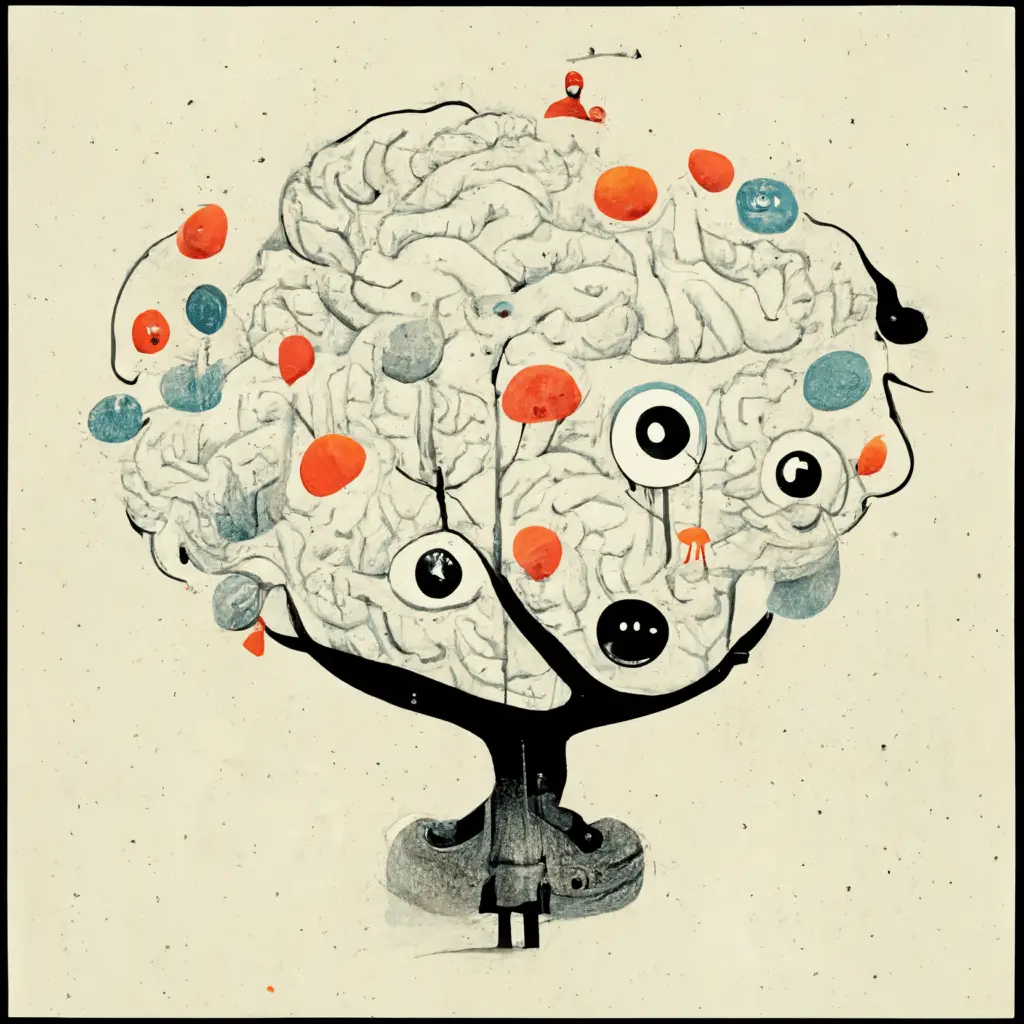
Eclecticism is combining many unrelated items to create something brand new.
Imagine creating a new kind of fruit that uses 4 or 5 different fruits, all combined on a tree while it’s growing. Yes, this is apparently a real thing. It’s called hybrid fruit and that’s how we got strawberries. Bam. Now you learned 2 things.
In psychology, eclecticism can mean using the eclectic perspective, which combines different methods and techniques, and knowledge from different fields of psychology to make a specific plan for a patient.
How Eclecticism in Psychology Works: The Cooking Pot of Therapies
Think of eclecticism in psychology as a big cooking pot. Each ingredient represents a different approach, technique, or theory from the world of psychology. Instead of sticking to just one recipe, eclectic psychologists mix and match ingredients to create a unique dish tailored to a specific person’s needs.
This approach allows for flexibility and adaptability, because it means therapists can use the best parts of various psychological theories and practices, rather than sticking to just one. In other words, it’s like making a soup that has a little bit of everything – a dash of cognitive-behavioral therapy, a sprinkle of humanistic psychology, and a pinch of psychoanalysis. Yum!
Why Choose Eclecticism in Psychology: A Mix-and-Match Approach
Sometimes, a single psychological theory just doesn’t cut it. That’s where eclecticism comes in handy. By combining different methods and ideas, therapists can create an approach that’s tailor-made for each individual. It’s like having a wardrobe filled with a variety of clothes, allowing for endless outfit combinations to suit any occasion.
Eclecticism in psychology recognizes that people are complex, and no one-size-fits-all solution exists for everyone. With a mix-and-match approach, therapists can draw from different schools of thought to find the most effective treatment plan for a particular person.
The Roots of Eclecticism in Psychology: A Brief History
Eclecticism in psychology has been around for quite some time. It emerged in the mid-20th century, as psychologists began to see the benefits of combining different approaches to address a wide range of issues. This approach became even more popular in the 1970s and 1980s, as a way to counter the limitations of single-theory perspectives.
The idea behind eclecticism is to blend the best parts of various psychological theories, like taking the tastiest bits from different ice cream flavors to make a new, delicious scoop. As a result, this approach has gained popularity among mental health professionals, who can adapt their methods based on a person’s unique needs and circumstances.
Real-World Examples: Eclecticism in Action
Example 1: Overcoming Anxiety
Imagine a person who’s struggling with anxiety. A therapist using an eclectic approach might combine techniques from cognitive-behavioral therapy (CBT), mindfulness, and relaxation training. They could help the person identify negative thought patterns (CBT), practice staying present and focused (mindfulness), and learn to relax and reduce stress (relaxation training). It’s like a customized treatment plan, just for them!
Example 2: Dealing with Depression
Consider someone who’s experiencing depression. An eclectic therapist might use aspects of humanistic psychology, interpersonal therapy, and cognitive-behavioral therapy. By addressing the person’s self-worth (humanistic psychology), improving their relationships with others (interpersonal therapy), and challenging negative thoughts (cognitive-behavioral therapy), the therapist can create a well-rounded treatment plan to help the person overcome their depression.
Example 3: Building Self-Confidence
For a person who lacks self-confidence, an eclectic therapist might draw from techniques used in psychoanalysis, assertiveness training, and positive psychology. By exploring the person’s past experiences (psychoanalysis), teaching them to stand up for themselves (assertiveness training), and focusing on their strengths and accomplishments (positive psychology), the therapist can help build the person’s self-confidence.
In conclusion, eclecticism in psychology is like a buffet of therapeutic techniques, allowing therapists to pick and choose the best options for each individual. By combining various methods and ideas from different fields of psychology, therapists can create a customized treatment plan that addresses the unique needs and challenges of their patients. This approach is highly adaptable and flexible, making it an attractive option for mental health professionals who wish to offer the most effective treatment possible.
The Pros and Cons of Eclecticism in Psychology: Weighing the Options
Like any approach, eclecticism in psychology has its share of benefits and drawbacks. Let’s take a look at the pros and cons of this versatile method:
Pros
- Individualized Treatment: Eclecticism allows for tailor-made treatment plans that cater to a person’s specific needs, taking into account their unique background, circumstances, and goals.
- Flexibility: An eclectic approach is adaptable, allowing therapists to change and adjust treatment methods as the person progresses or new issues arise.
- Holistic Approach: By combining different techniques and theories, eclecticism in psychology offers a more comprehensive and well-rounded perspective on a person’s mental health.
Cons
- Lack of Focus: Some critics argue that eclecticism can lead to a lack of focus or consistency, as therapists may struggle to choose the most appropriate techniques for a particular situation.
- Potential Incompatibility: Some psychological theories may not mesh well together, leading to potential conflicts in treatment approaches.
Despite these potential drawbacks, eclecticism in psychology remains a popular and widely-used approach, offering therapists a flexible way to address the unique needs of their patients. By drawing from the best of multiple theories and techniques, eclectic therapists can provide comprehensive, individualized care that helps people overcome their challenges and lead happier, healthier lives.
In Summary: A Fruit Salad of Psychological Techniques
So, what is eclecticism in psychology? It’s like a fruit salad made up of various techniques, theories, and methods from different fields of psychology. By blending these “fruits” together, therapists can create a customized treatment plan that caters to each individual’s specific needs and goals.
With its focus on adaptability, flexibility, and individualized care, eclecticism in psychology offers a versatile and comprehensive approach to mental health treatment. While it may have some potential drawbacks, the eclectic perspective continues to be a popular choice among mental health professionals, providing a rich and diverse toolkit for helping people overcome their challenges and achieve their goals.





